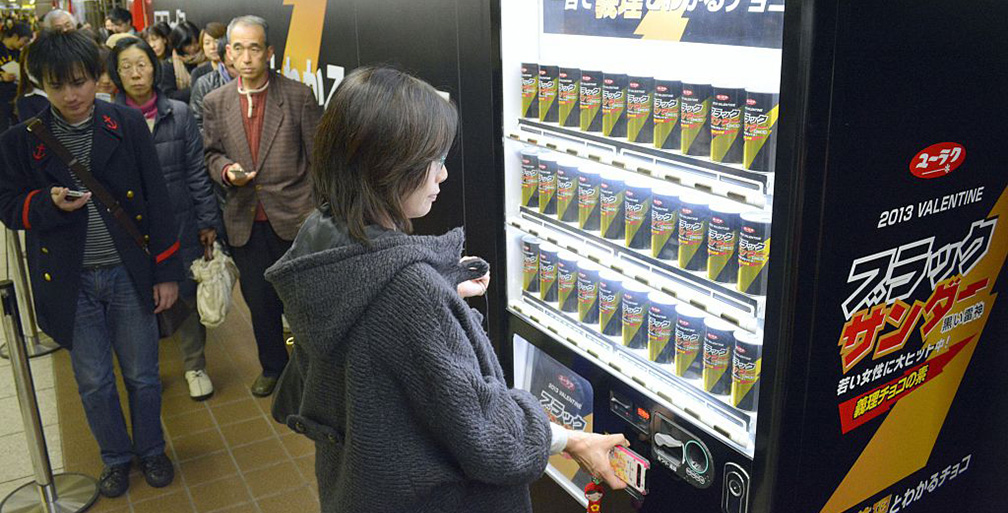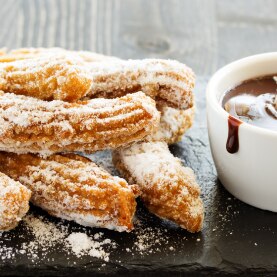Drinking chocolate’s reputation as an aphrodisiac
Drinking chocolate has been credited with an array of virtues, especially as a powerful aphrodisiac. Throughout history, this exotic beverage was greeted with widespread enthusiasm, from Moctezuma to King Louis XV’s mistresses, and the most famous libertines. Since the 19th century, solid chocolate has replaced the drink as a source of pleasure and gourmet indulgence and, some decades later, it became a symbol of love associated with Valentine’s Day.
The beginnings of the myth
The Aztec emperor Moctezuma (c. 1466-1520) considered chocolate to be an excellent aphrodisiac and drank large quantities of it before spending time with one of his many partners. When preparing this drink, the Aztecs added spices, such as vanilla and chilli, to enhance its stimulating effect. Although a bitter beverage, not particularly appetising at first glance, the fact that it was held in high esteem by a powerful man who had to demonstrate his sexual prowess was enough to convince the conquistadors.
After the Spanish conquest, chocolate and the myths surrounding it crossed the ocean and spread throughout Europe. In Spain, Italy, France and Austria, chocolate seduced the elite classes and in turn became a means of seduction. Chocolate Houses opened in England and were seen as places not only for drinking chocolate, but also for scheming, social climbing and loose morals, of merriment and dubious success. Charles II (1630-1685) accused chocolate, along with coffee, tea and sherbet, as being responsible for such disarray and tried, in vain, to ban these popular meeting places.
The Church’s point of view
Churchmen were not unanimous in their opinions of drinking chocolate and its sensual undertones. While some found nothing wrong with it, many clergymen feared the sinful effects of this steamy hot drink. In 1624, Franciscus Rausch, a German theologian, claimed that drinking chocolate was provoking a ‘blaze of passion’ and ‘scandals’ in monasteries. Consuming chocolate was, therefore, considered incompatible with a life of sexual abstinence.
A boost for libertine morals
Aristocratic women had the exact opposite concerns to those of the clergy. Having somewhat disappointed Louis XV, Madame de Pompadour drank chocolate with amber in order to warm her senses and appear less frigid in the eyes of her lover. Madame du Barry served some to her lovers to ensure long nights of pleasure. Casanova and the Marquis de Sade, both famed for their sexual appetite, drank large quantities of chocolate for its stimulating qualities. Guillaume-René Lefébure, a French doctor (1744-1809), even claimed to have developed a form of drinking chocolate that was ‘as useful as it is pleasant’, not just an aphrodisiac but also capable of curing venereal diseases.
Chocolate pots and cups for drinking chocolate became a recurring theme among artists during this period and, whether in paintings, engravings or literature, the exotic beverage was associated with pleasures of the flesh.
A long-lasting reputation
From the mid-18th century, drinking chocolate became more accessible, losing its aura of pretention and scandal to become a commonplace consumer product. Solid chocolate, invented in the 18th century, gradually replaced drinking chocolate from the following century onwards. However, it remained closely associated with the notion of pleasure, and was not eaten for nourishment, but enjoyed as a gourmet indulgence. Today, Baci (‘kisses’ in Italian) and Mon Chéri (‘my darling’ in French) have become classic gifts between lovers, while artisan chocolate makers continue to perpetuate the myth, as with the Parisian Jean-Paul Hévin, who has created a ‘dynamic chocolate bar' with ginger and bois bandé. Chocolate still maintains a strong reputation as an aphrodisiac, which all seducers worthy of this name must turn to their advantage. Thus, when presenting the recipe for yet another delicious chocolate dessert, designed for seduction, Roberta Schira warned readers: “Direte : ancora cioccolato ? Sì, ancora, e se vi chiedete il perché avete sbagliato libro” (“‘More chocolate?’ I hear you say. Yes, more, and if you are wondering why, you’re reading the wrong book”).
Chocolate and Valentine’s Day
Valentine’s Day originated in England as a special day for lovers, thanks to Geoffrey Chaucer’s poem and 14th-century courtly literature. However, chocolate as a gift symbolising pleasure and love only became associated with Valentine’s Day much later, in the latter half of the 20th century. In Japan, the custom is for women to give chocolates to the men in their social and professional circle. In order to avoid any confusion, there are different kinds of chocolate to express different sentiments: giri-choko (‘obligation chocolate’) for respected colleagues, chō-giri (lower quality ‘obligation chocolate’) for less popular colleagues. Honmei-choko (‘true feeling chocolate’) is reserved for the man for whom the giver has romantic feelings, while tomo-choko (‘friendship chocolate’) is exchanged between friends. This relatively recent tradition has become so popular that, in 2013, giri-choko vending machines were installed in Tokyo’s Shinjuku station.
CONSTANT, Christian, 1999. Du chocolat discours curieux. Paris : Éditions Ramsay.
DE CONTENSON, Elisabeth, 2010. Le chocolat et son histoire. Paris : Archives & Cultures.
HARWICH, Nikita, 2008. Histoire du chocolat. Paris: Éditions Desjonquères
KHODOROWSKY, Katherine et ROBERT, Hervé, 2004. Le chocolat. Paris : Le Cavalier Bleu.
SCHIRA, Roberta, 2005. L’amore goloso. Milano: Ponte alle Grazie
TOUSSAINT-SAMAT, Maguelonne, 1997. Histoire naturelle et morale de la nourriture. France : Larousse.
OGASAWARA, Yuko, 1998. Office Ladies and Salaried Men : Power, Gender, and Work in Japanese Companies, Berkeley : University of California Press, pp. 98-113, 142-154, 156, 163. ISBN 0-520-21044-1.






